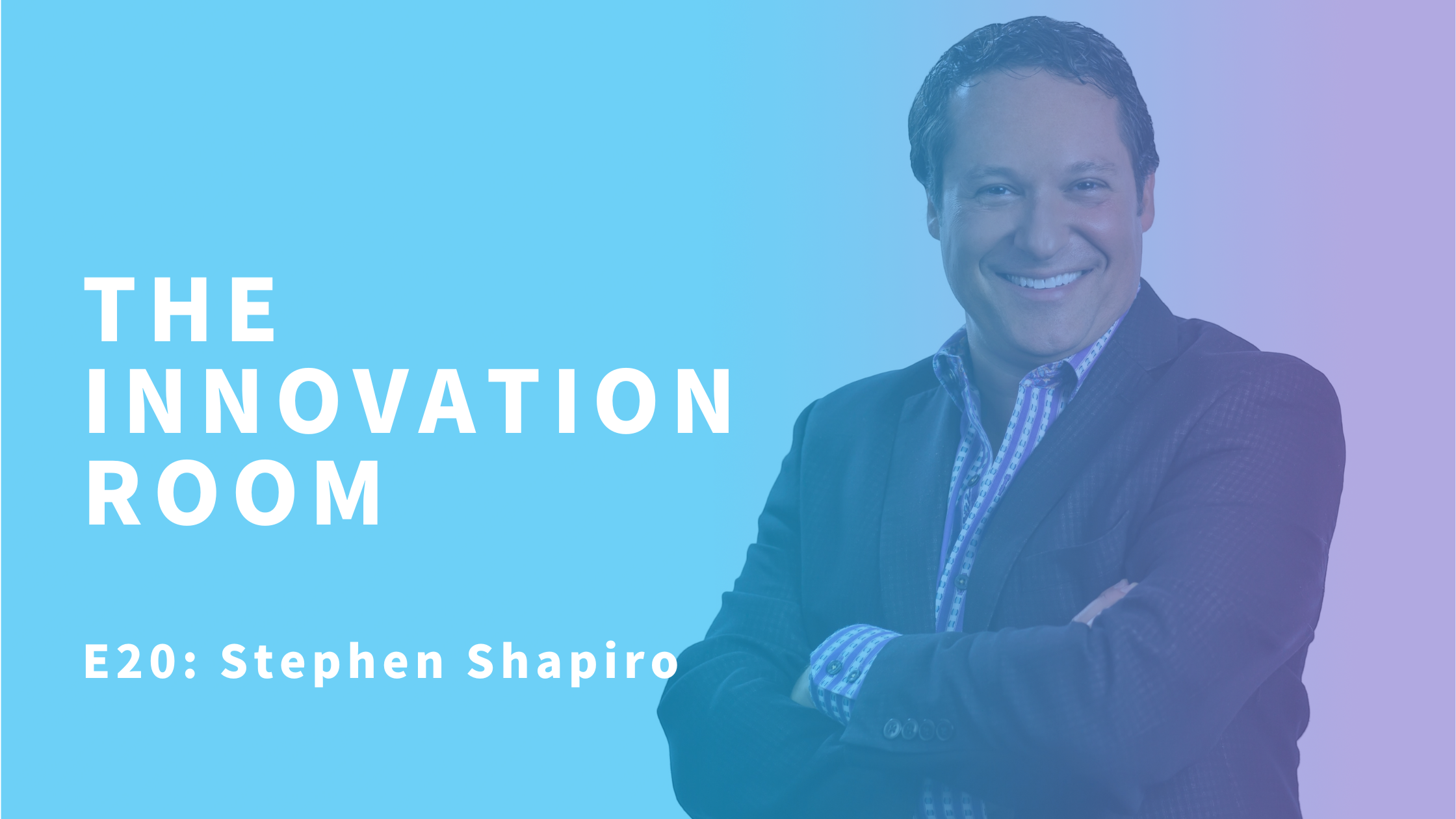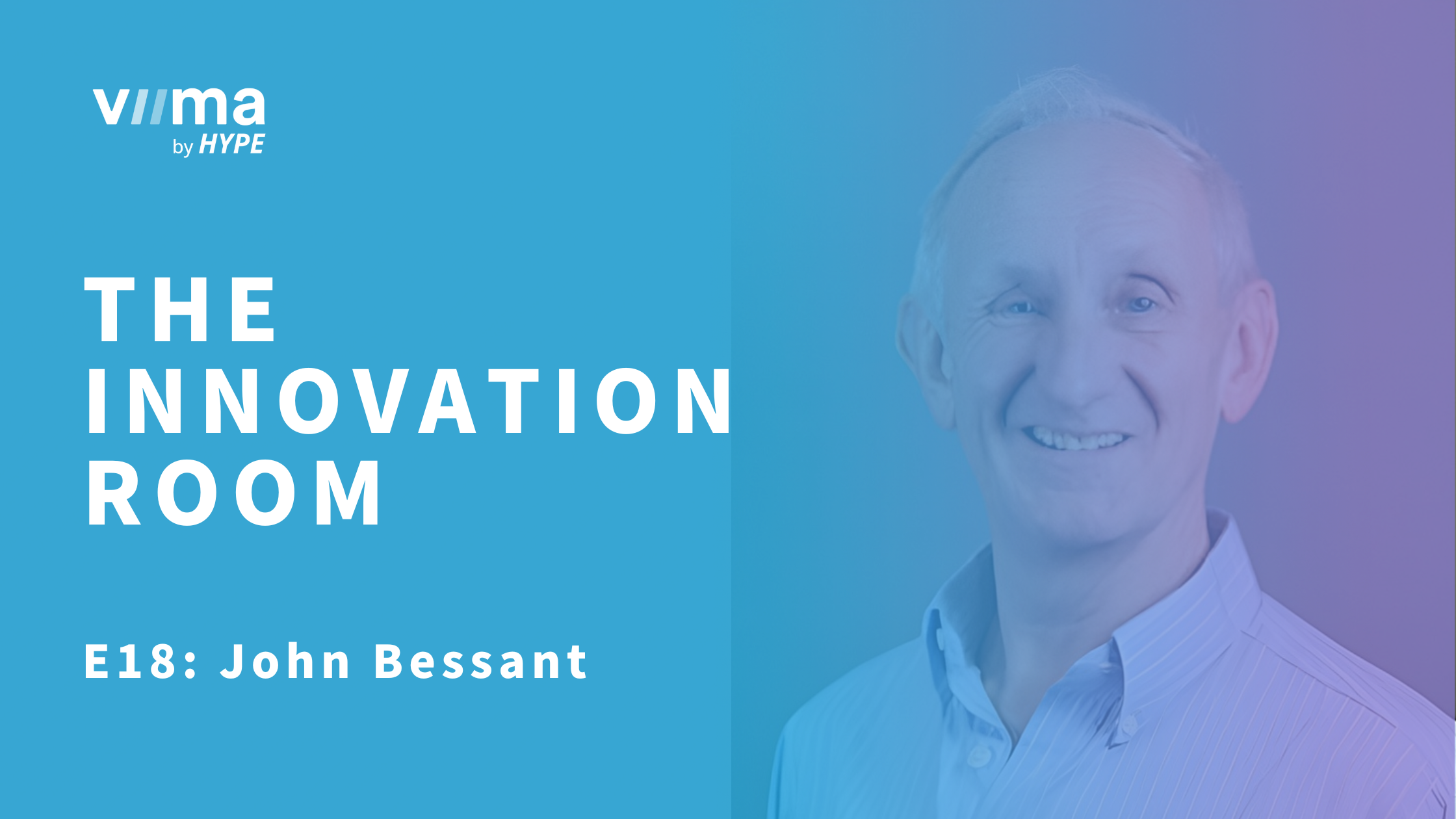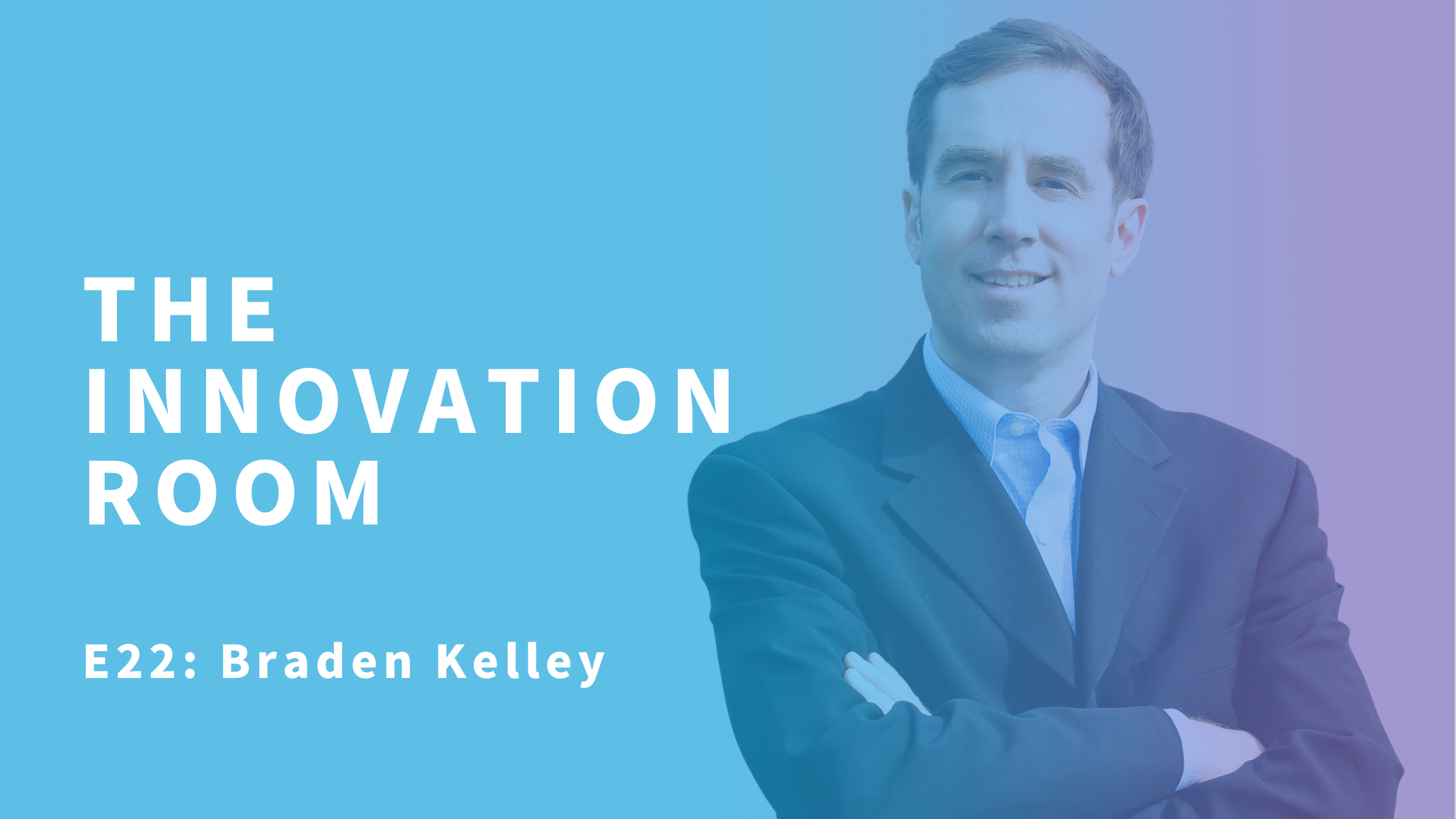Leading Innovation with Natalie Turner
We've returned with yet another Innovation Room Podcast episode. In this conversation, Colin was joined by Natalie Turner to talk about the inspiration behind The Six 'I's® model, lessons she learned while working in Asia, and explore the challenges and opportunities in the ever-evolving innovation landscape.
Natalie Turner is an acclaimed author and thought leader in the field of innovation. She is the author of the award-winning book Yes, You Can Innovate, and the inventor of The Six ‘I’s® of Innovation, a model designed to help people measure their innovation strengths and achieve greater impact from new ideas.
With a rich background in marketing strategy, organizational development, and innovation, Natalie has served as a corporate innovation director, entrepreneur, and business owner in the UK and across Asia. Her work has empowered countless individuals and organizations to unlock their creative potential and harness their innovation strengths.
Table of contents
Colin: Can you tell us a little bit about your background and how you first entered this weird and wonderful space of innovation? How did you find your way into this world?
Natalie: In a way, it was an accidental stumble. Although, when you look back over your career and life, you see a thread that pulls you towards certain roles.
I discovered the business side of innovation after completing my master’s degree and joining a small boutique consultancy. During my studies, I took courses in social psychology, media, and related areas and I found it fascinating. While working at the consultancy, we explored new markets for learning and education and how technology was poised to transform that space. This was some time ago, in the era of CD-ROMs and intranets. It was my first experience in examining emerging trends, understanding what’s new, and observing how these innovations were changing and transforming the way we live and work.
Later down the line, I got a very interesting role at British Telecom (BT), working as a strategic analyst in card services field. So, I was hired to look at what’s new, what’s coming up, how the future might look like. I got to attend conferences on mobility, the Internet and so on. That made me realize that charge cards [telephone cards used in payphones and landlines] are not going to be around for a very long time, so I started to look for new roles in BT and ended up in a department called Internet and Multimedia Services (IMS). At that time, it was just a tiny group of people, but it grew to be so big, it became BT, in a way.
But these two roles helped shape my journey significantly. It led me to Germany, to work in an incubator, generating new business ideas for a big engineering firm that would turn into new ventures. I decided to follow one of those ventures, in the area of human psychology and value systems around work. It was fascinating as I was able to learn about the people's side.
So, this was the time in my career when the people side started to merge and fuse with the technology side. The last significant role that I would like to bring up was in Research International. I was part of their innovation division called Fisteen20 and it was this role that introduced me to design thinking, facilitation, creative thinking, ideation and so on.
These were the significant roles in my career journey that led me to innovation.
The Six 'I's® of Innovation
Colin: One of the things that I've always been inspired by is your methodology: The Six 'I's® of Innovation. Can you tell us more about it? How does this methodology manifest itself through your work today?
Natalie: When I was working at 1520 on design thinking facilitation, we were coming up with these amazing ideas with clients, and creative consumers. There were a lot of stimuli, a lot of things flying around, we were developing great propositions. However, many of these ideas were getting lost in the organization. They didn’t have a formal way of managing idea flow. It made me think about the key challenges that caused this.
Back in 2004, 2006 I dipped my toes into the world of organizational development and leadership development, and the whole people and culture space. I started to realize that so many reasons why we find innovating difficult are people, culture, organizational structures, management systems and not the ideas themselves. So, this was the initial spark.
Many reasons why we find innovating difficult are people, culture, organizational structures, management systems and not the ideas themselves.
So, off I went on my hero's journey, I left the corporate world and set up an Entheo Network in 2006. That was the time when I went in search of a model that I could use while working with clients. Yet most of the models I came across were technology, R&D, or product-driven. And we know that innovation is so much more than product development. Particularly these days we are far more into business models, innovation services, processes, and systems.
Innovation isn’t just about the innovation team, it is about a company-wide activity, people thinking differently and doing things differently in their day jobs.
So, these things initiated the idea of creating something that I believed would pull all these disparate, multi-layered, multifaceted elements around the innovation journey. There are six stages of innovation, what I call The Six 'I's®: identify, ignite, investigate, invest, implement and improve. At the center of the model, I placed purpose, because it’s important to think about the impact of what we're innovating and what we're bringing into the world.
 Then we have the two triangles that link purpose to each of the ‘I’s. These are really important because they reflect the processes that we build in our environments to enable us to innovate across each of the ‘I’s and the cultural environment that we stimulate for the people we're working with, creating great teams that can diversely bring all their different ideas together.
Then we have the two triangles that link purpose to each of the ‘I’s. These are really important because they reflect the processes that we build in our environments to enable us to innovate across each of the ‘I’s and the cultural environment that we stimulate for the people we're working with, creating great teams that can diversely bring all their different ideas together.
Innovation as a Journey
Colin: Do you find that most of your work is with people who have never innovated, are trying to learn what it all means, and are at a senior level of an organization? Or are you dealing with people who are working in innovation, and are simply trying to get better at it?
Natalie: I would say predominantly we're brought in to work in organizations that are struggling with understanding what innovation is, what it means to them and how they can create a climate and an environment for people to also understand how they contribute their own personal skills and strengths.
That's a big part of why I've designed a profiling system around The Six 'I's® where people can answer a questionnaire and it gives them a flavor of how they see their self-perception of their skillset around the journey of The Six 'I's®. And I think that's been a big database for organizations because there are a lot of models and assessments which are more psychologically driven, but this is about skills.
I often think we're brought in to consult because organizations are trying to upskill their workforce, they're trying to help people understand that innovating is a journey, it has lots of different facets to it, lots of different diverse skills are required to make innovation happen. That can be brought in in different ways.
innovating is a journey, it has lots of different facets to it, lots of different diverse skills are required to make innovation happen.
So, some of it is training programs, where we apply the model on challenges. I think that's where it gets really interesting, when people learn about what innovation is and they immediately want to innovate, to create something as a response to real life issues and challenges in the organization.
Other times it can be consultancy practices or practices developed over time. For example, we've been working on a big leadership development program with executives who are very seasoned people, but they don't necessarily see themselves as the innovators of the organization. They see themselves leading their division. So, this program is about helping them understand what it means to be a leader, what it means to be leading innovation in their respective areas, and how they are going to drive that in their departments.
I would say it's mostly around upskilling mindset development, cultural development, people development, but also linking it to outcome. What are we trying to innovate?
Leadership Differences Between Asian and Western Countries
Colin: I know that you worked in Asia for a long time. Have you noticed some significant differences between how leadership approach innovation in Asian countries compared to Western countries? What did you learn over the years of working in Asia?

Natalie: It's an interesting space. I lived there for nearly 13 years, both in Singapore and in Malaysia and worked extensively across the region.
I got invited to speak at a leadership conference on innovation in Singapore in 2010, just after the global financial crisis. I was leaving dreary London where everything was closing in this field and arrived at Singapore to find this industry on fire. People were hungry and interested to learn more and in just a couple of days, I had around 20 odd meetings. Eventually, this is what kicked off my speaking career as I kept getting invited to give speeches on the topic.
So, the first thing that hit me was this massive hunger for innovation and for understanding what it means in the bigger picture. I think that is due to the culture there. For example, we work a lot with the Singapore government, and they invest a lot into upskilling across all their agencies, so everybody goes through innovation-type programs to help them understand what innovation really is.
In some of the multinational companies that I worked with, there’s a sense of deference to leadership and hierarchy. Once you get a great leader behind innovation initiatives, everyone jumps in to support it.
I think in the Western world individualism is engrained in the culture, and we don’t see such a level of support. One of the great upsides of the more collectivist views around innovating is that it's not just about hierarchy, it's about the sense of what is good for the whole organization, rather than just for the individual, what is good for the whole society. It brings people together to solve things that will affect everyone rather than just the individual.
Challenges for Innovators Today
Colin: What do you think are the biggest challenges for the average innovator today compared to five or ten years ago?
Natalie: I wrote “Yes, You Can Innovate” back in 2018 and I often think about that title, if I could, I would change it to “Yes, You Must Innovate”.
Obviously, we can, but people must understand that innovation is far more than just this small niche area. If we are looking to empower and enable people more generally, then there is this imperative to upskill people’s ability to identify opportunities and create new ideas, help bring them to life whether they are entrepreneurs or part of a larger organization.
I see three big challenges for innovators today:
- First, it’s obviously technological change and artificial intelligence. We really have to keep up with these changes, understand what's happening in that landscape, and know what it means for us and our organizations. How will it affect how we work? How can we take advantage of new technologies? And how will we shape their use?
Roles around this are changing so fast and significantly. I read a really good article the other day that said we're moving from the knowledge economy to the allocation economy, where the main skill set will be the ability to manage complex models of artificial and human intelligence together. - The second challenge closely links to the first one. It is the ethical side of it. Purpose, the question of sustainability, understanding why we are innovating, are all very important. There is as much of a downside to what is being created as an upside. How do we use and implement these new technologies, how humans choose to do things moving forward are also important. I think that ethics is going to rise as a big, substantial area for leadership in particular.
- The third challenge is around environment and culture. We need fast, agile, and responsive environments. It's not just about individuals being good at something; it's about the whole system being effective. How is the system responding and creating an environment where people can flourish and contribute their skills?
We need to foster an innovation culture throughout the entire journey, not just a creative culture, but also a strong implementation culture. Implementation and influence are going to be the two critical skill sets for innovation as we move forward.
The Rise of AI
Colin: How do you feel about the rise of AI? Do you see it as an exciting opportunity and a significant boost for innovation, or do you have more concerns about its impact?
Natalie: Being an optimist, I see AI as a significant positive shift for addressing the complex challenges we face on Earth, as humans and as part of an ecosystem of sentient beings. I think there is massive potential.
However, I also believe there's a substantial dark side to what we have created. I watched the film Ex Machina the other night and it was hard to believe it was made ten years ago. It offers quite a foresight and made me wonder if we are heading in that direction.
AI has been around for years, but its public availability through tools like ChatGPT, which launched last November, has accelerated change so fast.
I find it incredible for efficiency and productivity, almost like it becomes part of your team. It also impacts higher-order thinking. We're not just automating processes; we're dealing with intelligence. Tapping into this vast intelligence for positive purposes is fantastic.
However, there is a very dark shadow side to everything, which is why we need discussions about ethics, regulation, and the entire system surrounding AI. Everything we have in our societies is a legacy and outdated. How will it keep up with all these rapid changes?
Learn more about Natalie and her work at her website.
Find more information about The Six ‘I’s® of Innovation at: https://www.six-i-innovation.com/
Connect with Colin and learn more about Hype Innovation consultants here.
You can listen to The Innovation Room Podcast on Apple Podcast, Spotify, and YouTube.


.png?width=50&height=50&name=Untitled%20design%20(1).png)

.png)

